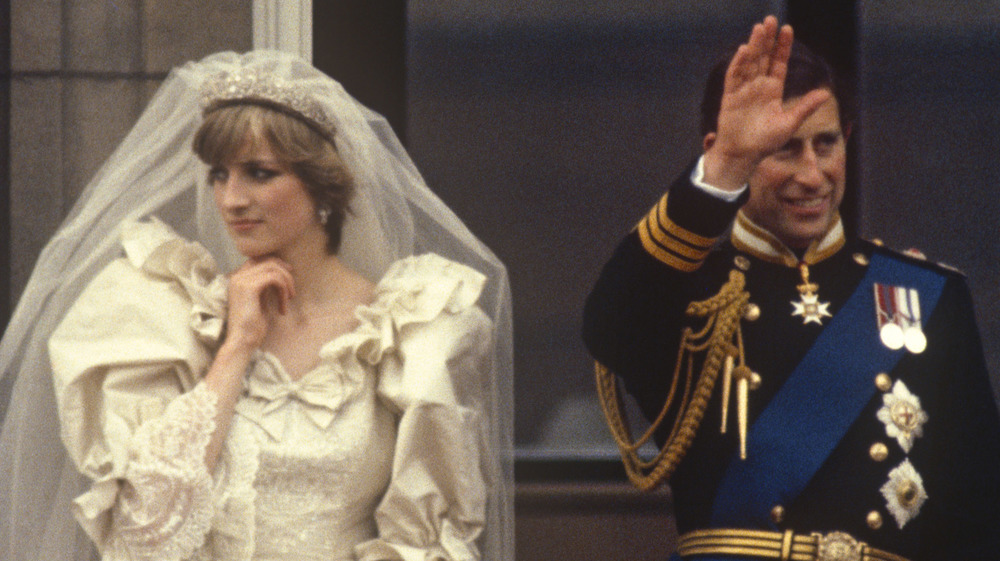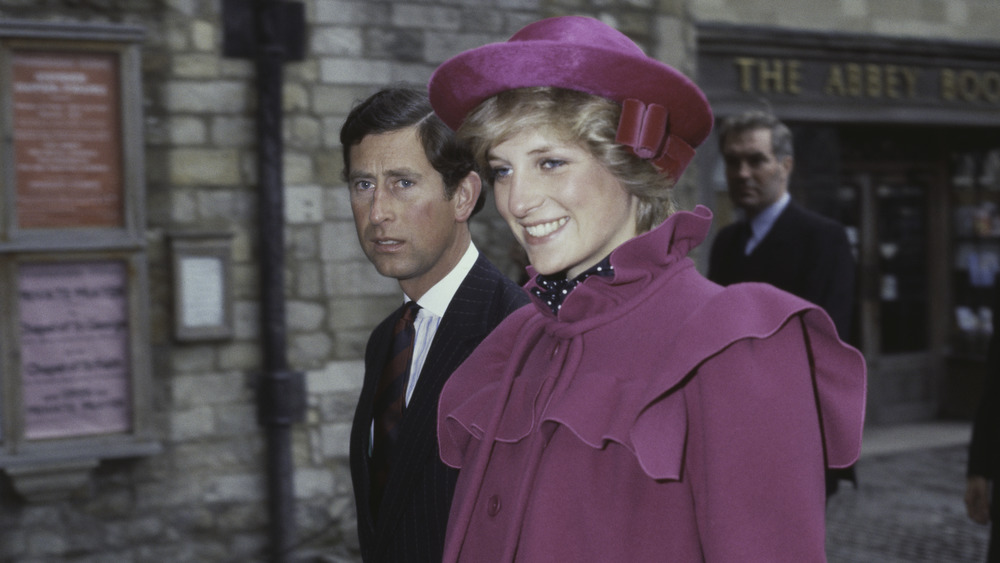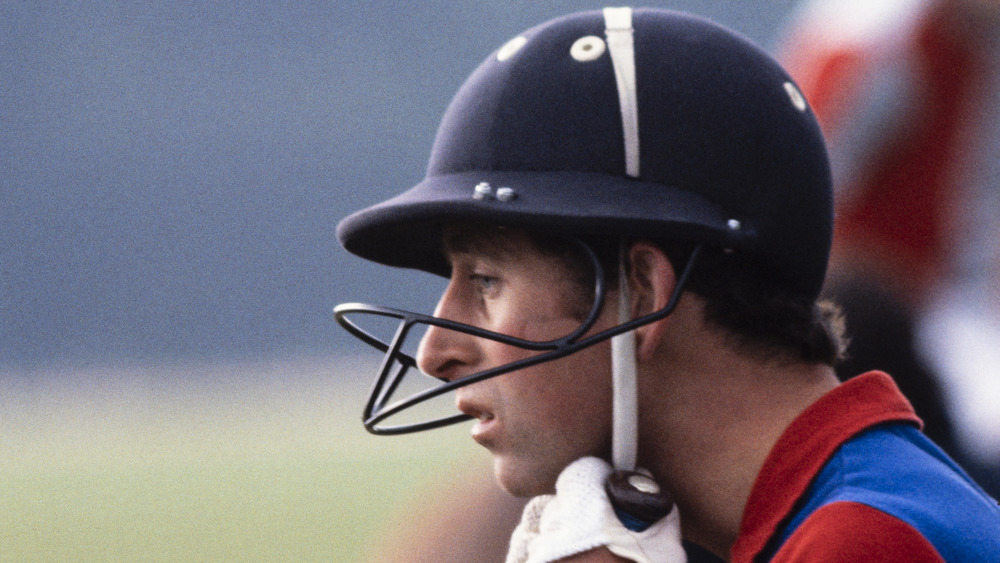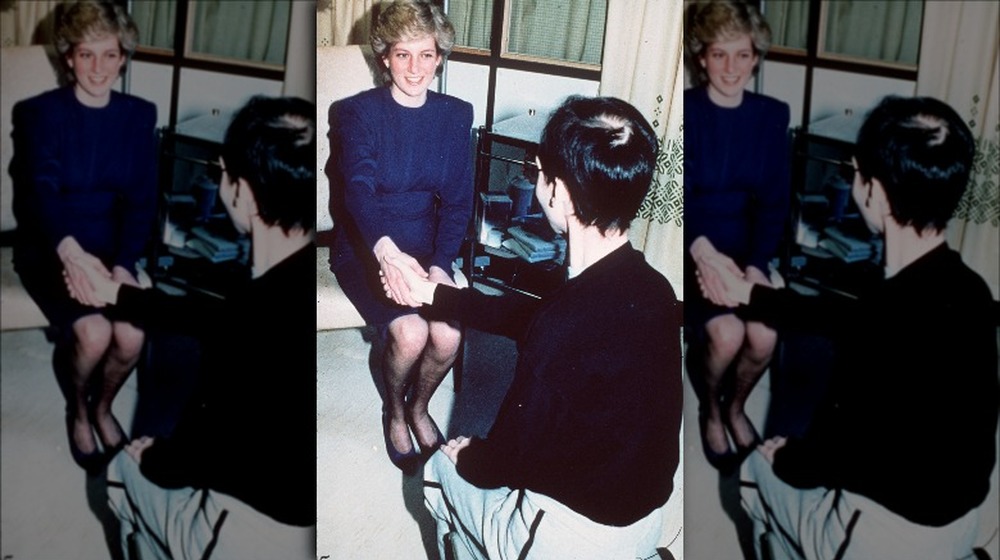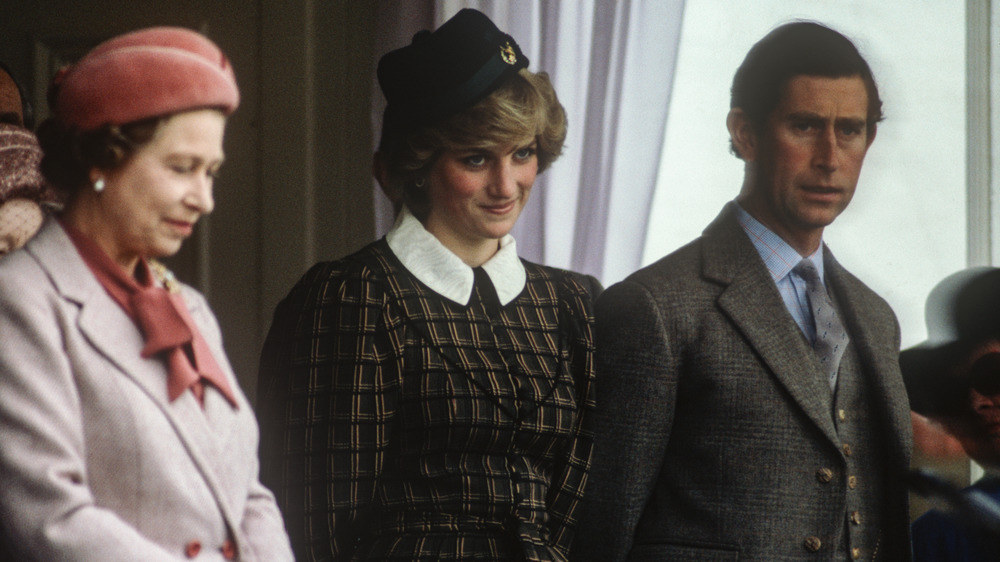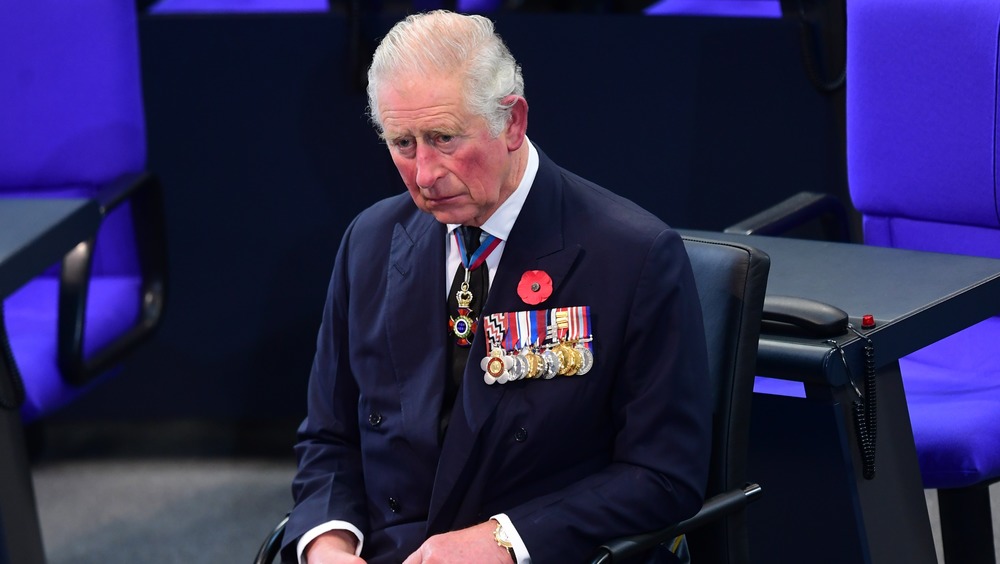Is The Crown's Portrayal Of Princess Diana And Prince Charles' Relationship Accurate?
In season 4 of Netflix's The Crown, we're finally getting to see the story of Prince Charles and Princess Diana, the fairy tale that captivated the world back in the early '80s but soon turned into a tabloid-fueled nightmare that makes Megxit pale by comparison. How much of what we're seeing on TV, however, reflects the truth of what was actually going on at the time, and how much was embellished in order to make for a better story?
In order to get some answers, we turned to Dr. Joanna Drell, the professor who heads up the history department at the University of Richmond in Virginia. Although her specialty is medieval and Renaissance European history, she's also an enthusiast on the modern British royal family. As a historian who remembers well those turbulent times (she confesses to a slight royalty "obsession" back then) she was able to supply us with some very detailed insights into the truth behind the TV drama.
Details about Diana's early life are pretty accurate
Drell says the scene depicting how the couple met "ticks off many of the boxes of well-known facts about how Charles and Diana came to know each other." Specifically, the fact that Charles did date Diana's older sister Sarah for a while, also the fact that Di had a schoolgirl crush on the prince — as Drell says, " it was reported that she had a poster of him in her room." She says this explains Diana's accidentally-on-purpose efforts to run into him when he came over to her family's house. Also it's true that Diana's family nickname was "Duch," which was short for "Duchess" (her future title).
Drell also says that Diana did, as the series shows, work as a teacher's assistant at a kindergarten while sharing a London flat with a group of friends. It looks like the series producers did their homework and put in some effort to make her backstory true to life.
There seemed to be foreshadowing of future conflict
Drell says that there's a darker side of some of the scenes we see, particularly in hindsight as we 21st century viewers know how everything turned out. She mentions details that "speak to larger issues about the relationship between Diana and Charles," and says that "many of them [are] foreshadowing/hinting at problems that arose in their troubled marriage." One particular scene that caught her eye was one in which Diana is appearing in a school play, since Diana merely plays a tree in a production of Midsummer Night's Dream, a play with which her "high culture" adult husband-to-be was not only familiar, but had "a detailed knowledge of the characters" (except, perhaps, for any trees, rock, boulders, or other assorted filler material inserted to give every student a role). Some implied contrast there, no doubt, as is a scene where Diana is dancing to loud pop music in her flat but then later doesn't seem to "get" Charles' emotional connection to opera.
Drell reveals that the episode at the polo match where Diana reaches out with sympathy after the death of Lord Mountbatten is true to life in that Charles was an avid polo player in his younger days. She also notes the "cute touch that Diana is wearing overalls in the scene," something she tells is was "one of her fashion choices at the time." (It was the '70s, okay? Everyone made fashion faux pas back then.)
Princess Diana's work with AIDS sufferers
Drell describes a touching scene where Princess Di is seen " hugging a seven year old, underprivileged, possibly orphaned African American boy suffering from [AIDS]" and says that it accurately reflects her well-documented visit to the pediatric AIDS unit of a Harlem hospital as part of a 3-day visit to NYC she made in February of 1989.
"Surprisingly," Drell says, "The Crown omitted dramatizing the more famous time in 1987 when Diana held the hand of young man with AIDS at a clinic in London." She tells us, though, that both instances show how Princess Diana, both in her real and fictionalized versions, was well-known for "her compassion towards AIDS sufferers and interest in the crisis."
Scenes that can't be documented
Certain scenes in The Crown Season 4, Drell tells us, "generally dramatize events that only the participants could have known about." She cites as examples Prince Charles discussing his marriage with The Queen, Charles and Diana fighting, and arguments involving a courtier that revolved around a royal trip to Australia and New Zealand that would have kept Diana away from a young Prince William for a very long time. "Overall," Drell says, "these scenes served to highlight established rumors about the royal marriage."
Drell says that while specific words and details can't be corroborated, the ideas these scenes reinforce are all too true. She mentions the series' depictions of Charles accusing Diana of manipulating him by using the press to garner public sympathy, of palace courtiers siding with Charles by scheduling Diana for events without her knowledge, and of the Queen essentially forcing Charles to stay in a marriage even though, as Drell points out, "it was already clear how ill-suited Charles and Diana were." She feels that much of what is depicted unfortunately does jibe all too well with what we know to be true about that very unhappy, and very public, marriage.
How this season of The Crown may be harming Prince Charles' reputation
One aspect of this latest season of The Crown that we viewers in the former colonies may not have been aware of is the fact that, even \ decades after her death, Lady Di still seems to be winning the PR war. Drell's take on it is that the scenes of marital disharmony "are not doing much to help the image of Prince Charles in Britain these days" since "the picture painted in the series of Charles is damning."
She feels that it would be wrong to unfairly condemn Prince Charles out of hand on account of what is still, no matter the veracity underlying it, a work of fiction. "With very few exceptions," she explains, "we cannot know what really happened in a lot of these episodes," and goes on to say that "the Queen has never spoken out about the royal marriage," but that not only Diana but Charles both acknowledged what amounted to "mutual unhappiness, infidelity, and mismatch." In other words, there are no clear-cut villains in the story, nor heroes either, and that no-one may be entirely innocent (except, of course, for two little princes who were in no way to blame for their parents' problems). Drell sums up Season 4 by saying it was "quite painful to watch" due to the fact that "it showed that fairy tales really aren't true—no matter how poofy the dress or shiny the jewels."
